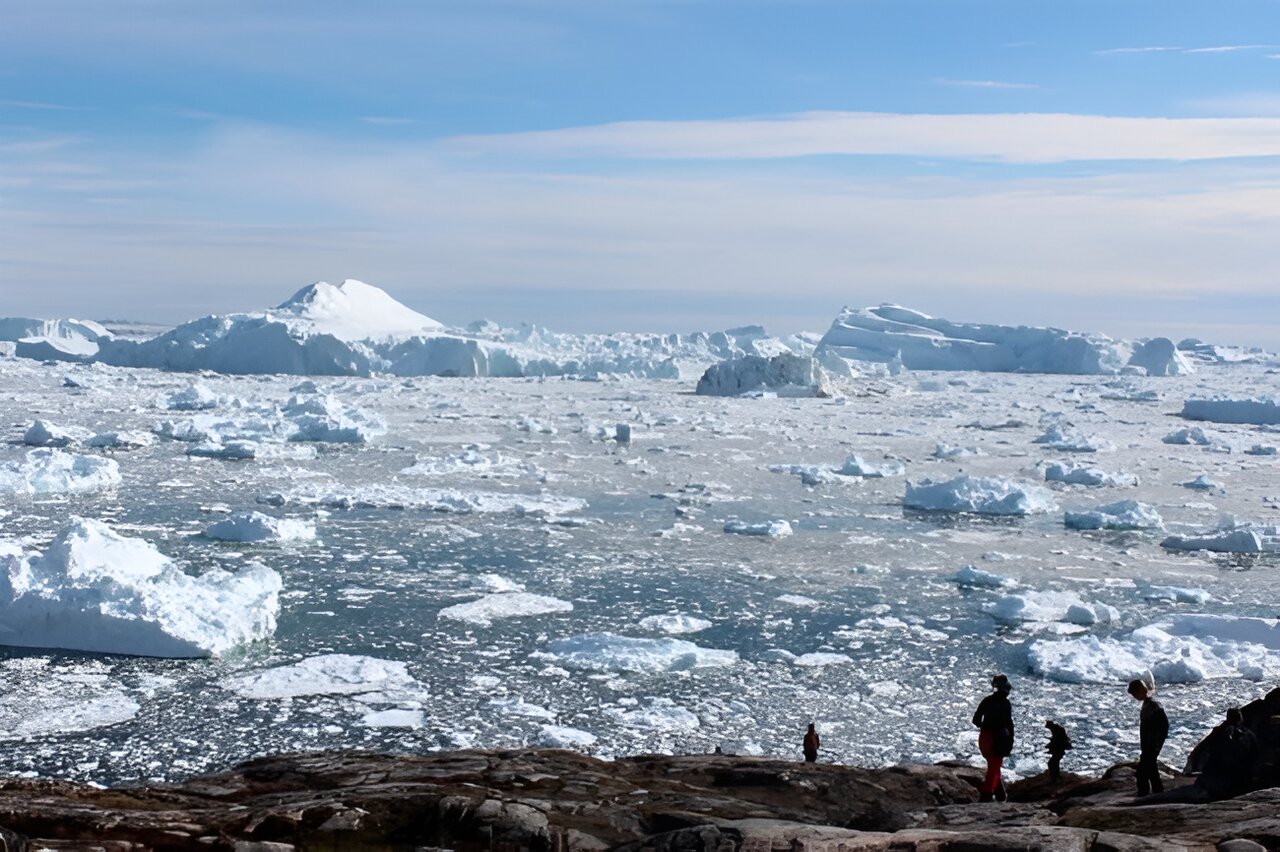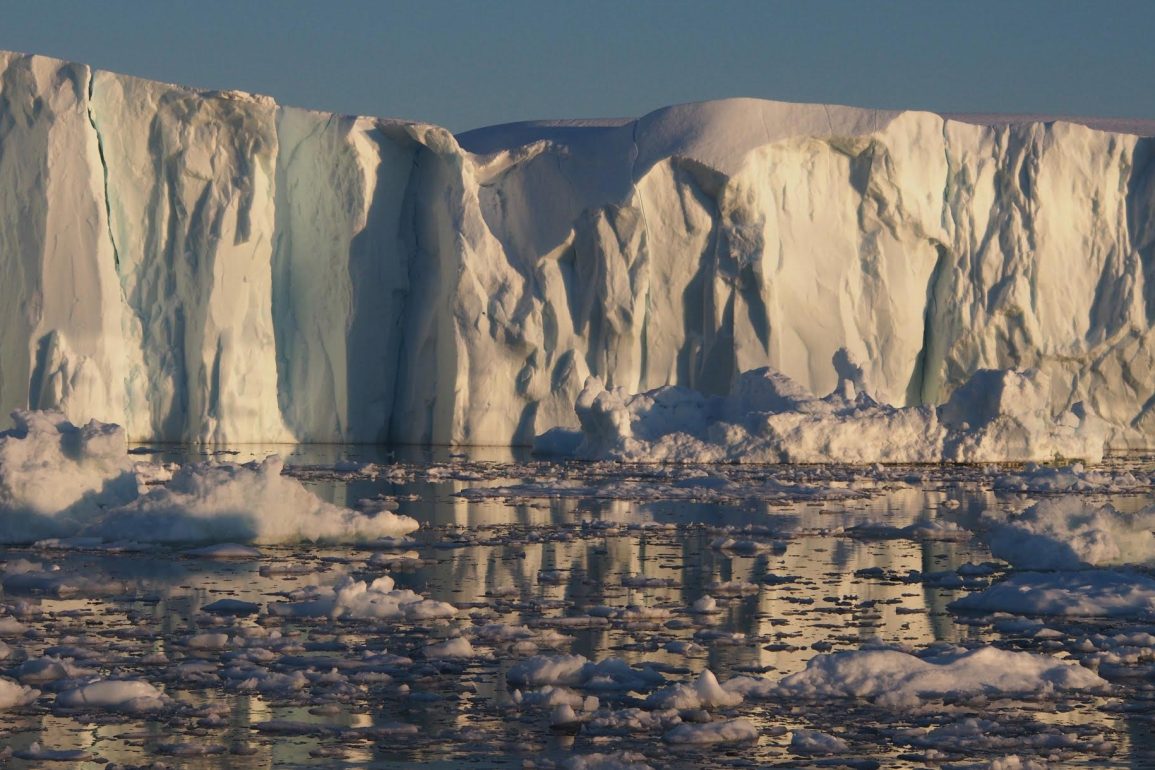Scientists are undertaking a high-risk mission to explore the Kangerlussuup glacier in western Greenland, where massive ice blocks crash into the sea, and powerful underwater currents make exploration treacherous. Using a multimillion-dollar remotely operated submarine, the team hopes to gather data that could reshape the understanding of climate change’s effects on glaciers and sea level rise.
The hazardous conditions, with near-zero underwater visibility due to suspended mud and sand, add to the challenge, but the potential insights could greatly refine predictions of future sea levels.
The goal of the expedition is to resolve an important scientific mystery: whether the large sediment mounds formed by glaciers can act as “speed bumps,” slowing the impact of global warming by insulating glaciers from warmer ocean waters.
These sediment barriers are not currently factored into climate models, but they could play a critical role in delaying glacier retreat. However, little is known about them, as this challenging area where glaciers meet the ocean has never been explored in detail before.
During the mission, the scientists aboard the research vessel Celtic Explorer make a startling discovery—a vast underwater cavern beneath the glacier’s base, offering new insights into the glacier’s structure. The remotely operated submarine, Nereid Under Ice (NUI), piloted by engineer Victor Naklicki, navigates through the cavern, battling strong currents that nearly pull it further into the glacier.
Despite these hazards, the submarine collects invaluable data, including core samples of sediment at the glacier’s foot—an achievement no one had reached before.
Throughout the expedition, the team faces numerous dangers. At one point, a sudden surge of mud almost buries the NUI, and on another occasion, an iceberg the size of 45 football fields detaches from the glacier.

These events highlight the precarious nature of the mission, yet the scientists persist, driven by the opportunity to gather data that could significantly influence climate models. The core samples from the glacier’s base, for example, are essential for understanding how sediments affect glacier dynamics.
The data collected is critical for improving predictions about sea level rise, especially since current models are inconsistent. The melting of ice caps could push sea levels higher, endangering coastal cities around the globe.
Sediment expert Prof. John Jaeger from the University of Florida stresses that current models do not account for the “speed bump” effect of these sediment mounds, which might slow the retreat of glaciers and delay the associated sea level rise.
The research team uses a variety of methods to study the glacier and its surrounding environment. Drones repeatedly map the glacier’s surface, while seismic surveys explore the seafloor, revealing layers of sediment that have built up over time.
This multi-disciplinary approach provides a clearer understanding of how sediment banks form and offers new ways to analyze the glacier’s movement. The expedition uses cutting-edge technology to reveal information previously inaccessible to scientists.
For the research team, this mission is the result of years of planning and effort. The data gathered by the NUI provides an unprecedented level of detail, revealing features on the seabed that were previously unknown.
While analyzing the findings will take time, the implications for predicting future sea level rise are significant, offering new insights into how glaciers interact with warming oceans and how this will affect global coastlines.
The expedition’s findings may even inform new ideas for slowing the impact of climate change, such as building artificial barriers to shield glaciers from warming ocean waters.
While this concept may seem far-fetched, the natural sediment mounds formed by glaciers suggest that such barriers may already be functioning in some areas. Understanding how these natural formations work could provide valuable knowledge for developing strategies to slow sea level rise.
Nevertheless, while the sediment mounds may delay the effects of climate change, the scientists caution that significant sea level rise is inevitable. Coastal communities, particularly in less wealthy nations, will need to prepare for the flooding that is certain to occur in the coming decades. The data gathered during the expedition will help identify which areas are most at risk, allowing for better preparation.
The mission’s success is not only a scientific achievement but also a personal milestone for many of the scientists involved. For example, NUI’s pilot Naklicki reflects on how his childhood interest in video games helped him master the skills necessary to operate the submarine.
Chief scientist Prof. Ginny Catania also reflects on the emotional and logistical challenges of balancing her professional work with her personal life, as she successfully leads this groundbreaking expedition.

